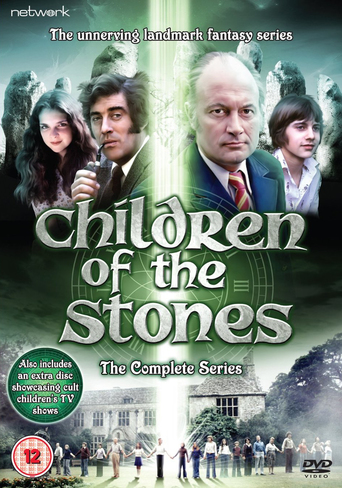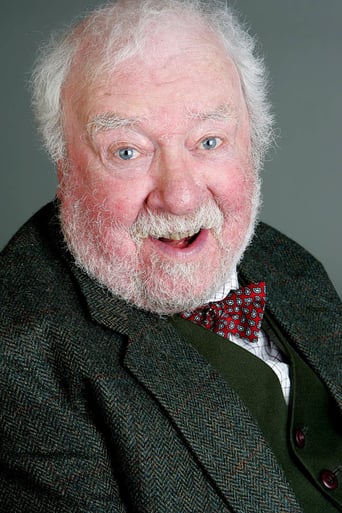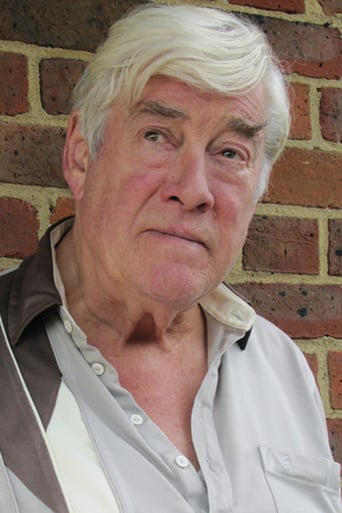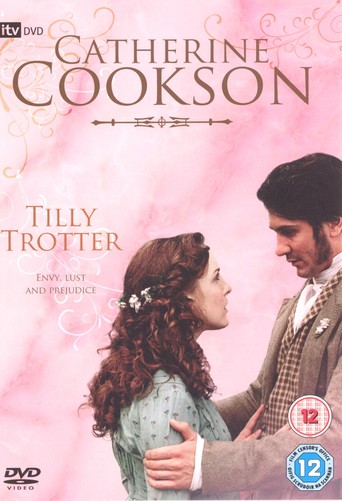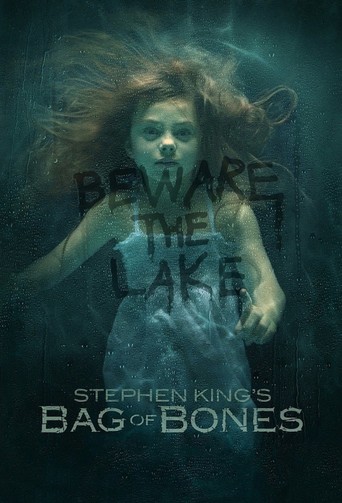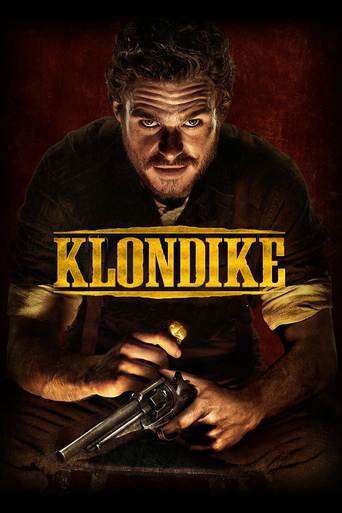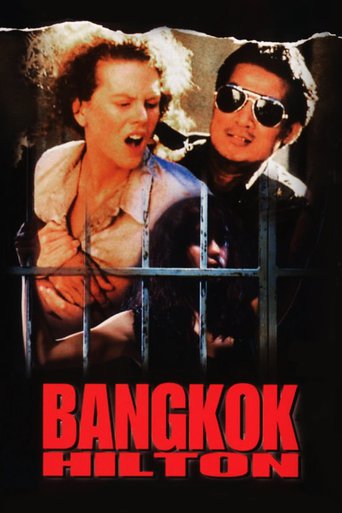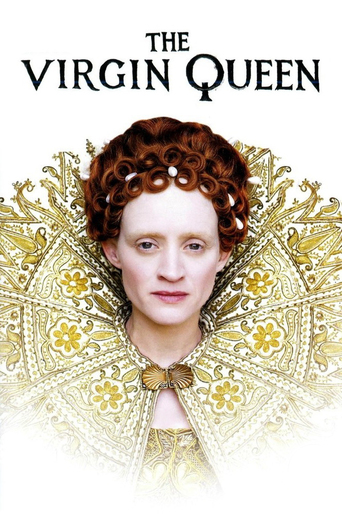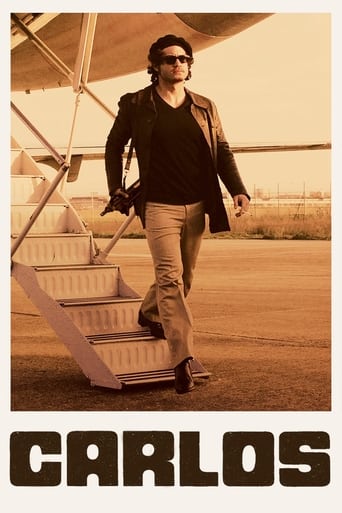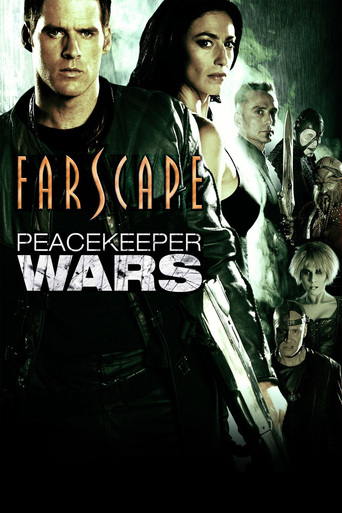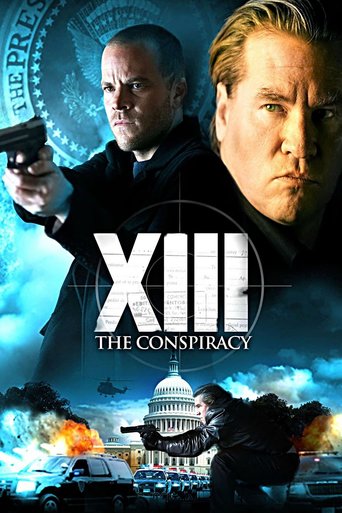Children of the Stones (1977)
Astrophysicist Adam Brake (Gareth Thomas) and his teen son Matthew (Peter Demin) investigate the roots of a mysterious stone circle in the quiet British village of Milbury, where they encounter the sinister Rafael Hendrick (Iain Cuthbertson) and entranced villagers known as "the happy ones".
Watch Trailer
Free Trial Channels
Cast


Similar titles
Reviews
Expected more
n my opinion it was a great movie with some interesting elements, even though having some plot holes and the ending probably was just too messy and crammed together, but still fun to watch and not your casual movie that is similar to all other ones.
How wonderful it is to see this fine actress carry a film and carry it so beautifully.
It is both painfully honest and laugh-out-loud funny at the same time.
This TV serial aired thirty three years ago and brought back a lot of memories of the originality of UK children's TV in those days. It is probably a little too "talky" for today's audiences and it does require one's whole attention. Back then, there were many TV serials, books and films dealing with the occult or prechristian pagan themes, and like murder mysteries, they were invariably set in picture postcard English villages, where everyone seems to be addicted to afternoon tea with cakes, and which makes one wonder just WHAT is going on in those little villages. Many, if not all, villages date from ancient times, especially if they are near a river or water source, and thanks to the laws which prevented people moving away from the parish or estate that they were tied to, the villagers' ancestry goes back as far as the village. Old customs and practices linger on, which adds to the mystery and folk lore. Unless you have visited Avebury and the general area, you can have no conception of how huge these monuments are, and how many circles and long barrows (neolithic burial chambers) there are. We know next to nothing about their builders and for what purpose they were built, which leaves room for fanciful imagination. We do know that what remains today is but a fraction of what once stood. Even the Avebury Circle and Stonehenge are mere fragments of what used to be.As I grew up listening to Journey Into Space and the Quatermass Experiment on radio, the time warp and parallel universe themes were no surprise. Throw in a bit of pagan witchcraft and I was on familiar ground. Without giving away any of the plot (everyone else has done that for me) I cannot help wondering whether the creators of LOST watched this show in their youth, as there are many similarities. So many in fact that I would go so far as to say that the finale of LOST will show that the island was on a circular parallel time where events kept repeating themselves.I would have given this show a rating of 10 for sheer originality, but the lack of close captions hampered me, being age related hearing impaired, and I could not follow the plot at all. Had it not been for reviews on the Internet I would not have had a clue what was going on. I am surprised how many viewers found it scary, as I did not find it so, but that is perhaps because I could not hear the actors very clearly.
A spooky supernatural children's tale from the 70's that transcends the age range it was aimed at, and is fascinating viewing for all.Adam Brake is an astrophysicist interested in a stone circle in a sleepy village in rural England called Milbury. He and his son pay a visit to the village in question, and soon begin to notice strange occurrences, not least the villagers odd behaviour and obsession with happiness. As the tale unfolds, we discover that the head resident has plans that are more malevolent than their worst nightmares, and the stone circle is somehow a direct link to a black hole that will unleash an ancient and terrifying force.Though the budget is limited, good use is made of the wonderful location, and the script is excellent.Some of the acting leaves a little to be desired, not least from Gareth Thomas of Blake's 7 fame.Still, that aside this is well worth tracking down for all lovers of cult TV
A scientist, Adam Brake(Gareth Thomas) has a 3 month opportunity to study and write a thesis on electromagnetivity in neolithic stones in the remote English village of Milbury. He brings along his young son Matthew, whom he enrols in the local school for the duration of their stay, Matthew is a budding scientist himself with lofty ideas for his future. Adam is keen to start as soon as possible and is delighted when Margaret, the curator of the local museum offers to show him something rather startling concerning the stones. Margaret asks him simply to touch the stones, this Adam does without any fear, but that soon changes as he hears ancient voices and sees strange visions just before a strong surge throws him feet into the air. Something else is at work here, but Adam doesn't know what. Margaret also warns him that he will soon feel very alone here as the residents are an odd bunch, with odd sayings and customs, in fact the village seems divided into regular people and what are known as "The Happy Ones" Matthew notices this in school right away, as the Happy children also show that lighter demeanor and are vastly more intelligent than the other kids.Matthew befriends Dai (Freddie Jones) a local tramp, whose social status belies his intelligence, for he has been spying on the residents and immediately knows Matthew is different, he warns that he will not be able to escape the boundaries of the village because of the power of the stones. The oddness seems to be being controlled by the town leader Rafael Hendrick (Iain Cutherbertson) a Lord Summerisle character and a former astro physicist of some renown, who on the outside seems friendly but he hides whats really going on very well. As the numbers of regular people begin to dwindle Adam and Matthew who has suddenly developed telepathic powers, begin a dangerous fight with unknown forces.Children of the Stones sure is an oddity, it was a 7 part series initially aimed at a school going audience, but there are some confounding themes at large here, some perhaps too dark, even the title sequence with its deeply unsettling choral vocalizations, while seeming perfect for the subject matter, does seem out of place for their target audience. It draws on many areas of Horror and Sci/FI, there's echoes of The Wicker Man, with the Hendrick character and the pagan pageantry, Village of the Damned, its odd and gifted kids, Invasion of the Snatchers, The Stepford Wives and perhaps most closely of all, The Quatermass Conclusion.For a children's TV program it does well to retain a sinister air and never dumbs down the plot. The cast is for the most part excellent, Thomas providing the assured hero figure with the gravitas and intelligence the role requires. Cutherbertson is his usual sinister self, he seems to revel in the Faustian roles and duly fulfills the task with gusto. Jones is also delightful as the eccentric tramp who knows everything. Overall its an enjoyable watch, it lacks some of the believability factor when it comes to the science and technology though, what a shame it wasn't written by Nigel Kneale, it would surely then have been considered a classic
(Some spoilers)Children Of The Stones has been called 'the children's Wicker Man' - one indication of the high regard with which this seven-part 1977 British television series is still held. Resemblances between Robin Hardy's 1973 cult classic are certainly strong, notably the pervasive strength of the pagan cult which threatens to overwhelm Adam Brake (Gareth Thomas) and his son Matthew (Peter Denim). Other influences include that of Nigel Kneale, whose work had been so prominent in British TV science fantasy. Thomas had already appeared playing a minor part in Kneale's Quatermass And The Pit (1967). The year after the present series was aired saw a last Quatermass, which concerns an unknown alien force 'harvesting' the youth by leading them to ancient ritual sites. The parallels between the fatal rapture of Ringstone Round, the 'happiness' of Millbury's own initiates, and the ominous role of megaliths in both shows, are striking. Filmed on location at Avebury, Children Of The Stones follows the usual technical format of 1970s' kids shows (video used for internal studio sequences, film for the atmospheric scenes shot outside). Sidney Sager provided an especially effective score, using a mainly wordless chorus for the credits and ghostly female soprano soloist. The series shares some of the weaknesses of the time (somewhat under-directed acting, and ripe performances, notably that of Freddie Jones, who plays Dai, the Welsh inebriate) and strengths, chief of which is a complex storyline, one completely different from the contemporary transatlantic product. Millbury, where the action takes place, is at the apex of numerous lay lines, a hub of psychic activity, a place of power into which it proves much easier to enter than leave. Hendrick's (Iain Cuthbertson) Millbury house is situated at the middle of the ancient stone circle which astrophysicist Brake arrives to study. More than just the defunct 'prehistoric Jodrell Bank' he envisages, this impressive monument marks the coming together of a number of still-active forces and traditions, offering physical and mental challenges to investigators. These combine in the figure of Hendrick, and Hendrick's home, the focus of events. It is here that the transformation of mind occurs, where the villagers chant and dance. "There are more things in heaven and earth than I have philosophised in my dreams," admits Brake to Margaret (Veronica Strong), expressing somewhat awkwardly the confusion he feels. In Millbury as he discovers, pure mathematics and modern science rub shoulders with the mysterious workings of age-old mysticism and rural legend. Balancing everything, creating a coherent world picture, is what gives the plot most of its interest. Brake and his precocious son are both intellectuals, empiricists by instinct, gradually brought round by circumstance to a necessary belief in 'the existence of that which exists'. (The words on the enigmatic picture which originally inspired Matthew's interest in the site.) Former scientist Hendrick, discoverer of the supernova at the heart of the mystery, is one who has already crossed that line. As Brake rightly identifies with some distaste at the end, Hendrick has since moved from professional astronomer to visionary 'magus', exchanging the certainties of science for the excesses of egocentricity. Brake and son have the problem of interpreting and adapting to events, while remaining intellectually independent, something which imminent brainwashing ultimately threatens to destroy. Away from external dangers, at the core of the narrative is the quartet of relationships between the Brakes, Margaret, and Sandra (Katherine Levy). The romantic interest between Adam and the female curator is, understandably muted, although enough feeling remains to ensure that the fate of the mother and daughter has some emotional drama at the climax. Alone out of the 50-odd villagers (the outsider Dai excepted) it is they who stand out in our mind, and exclusively they whom the Brakes struggle to rescue from amidst the doomed chanters. Particularly as played by stodgy Gareth Thomas, Professor Brake proves a dull fellow, whose son is far more interesting. Thomas (whose screen presence sometimes reminds one of the 1950s' British actor John Gregson) often has to work hard to convince us that his character is anything like as intellectually nimble as we might expect. (He later went on to star in another cult TV show, Blake's 7.) By contrast, Matthew Brake is exceptionally bright and much more dynamic, recognised by Hendrick early on as a worthy adversary. It is the son who triggers many of the key discoveries driving the plot. But even the younger Brake is somewhat daunted by the abilities of the happy pupils in the village school, whose mental prowess recalls the alien prodigies in The Village Of The Damned (1960). Iain Cuthbertson, on the other hand, who had earlier worked with Thomas on another UK TV series, Sutherland's Law, acts the genially threatening Hendrick very skilfully, and does a good job. The end of the series has been dismissed as a cop out, and certainly the abrupt interjection of a parallel time, circular chronology universe is unexpected. After the astro-psychic events just witnessed it is, frankly, one twist too far. Admittedly it is difficult to think of another way to end with a point of interest once the circle has been broken, and tension dispelled. Clearly a downbeat ending, such as concluded The Wicker Man, would have been difficult in a children's show, but the result of the Brake's final questioning of all events is to undermine the careful investigations and deductions made before. The miraculous restoration of friends and villagers is reassuring but, although such events may suggest a hallucination, the defusing of earlier tension is a let off. The re-introduction of Hendrick and his butler Link (as a fresh purchaser of the house, and estate agent, respectively) does nothing more than further muddy narrative waters, and the show really demands a more satisfying conclusion. Despite this disappointment, Children Of The Stones continues to hold the attention, primarily because of the audacious plot. If the concepts are far-fetched, they are never less than interesting, and worth revisiting.

